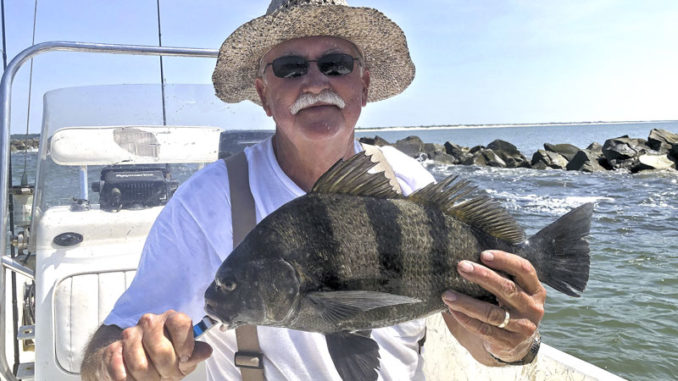
September’s cooling weather rings the dinner bell in SC/NC border estuary
With cooler water temperatures arriving this month, the inshore bite has picked up and along the North Carolina-South Carolina border near Little River, S.C. In that little estuary, the black drum bite is firing on all cylinders.
Greg Holmes of Fish Skinny Charters welcomes the black drum that inhabit his home waters around Little River.
“Black drum are one of our staple species. We catch plenty of them throughout the year,” said Holmes (843-241-0594). “Along with flounder, trout, and redfish, the black drum bite is good in September. (That’s) due to the cooling water temperatures and the abundance of bait.”
Little River’s estuary is small. But it is teeming with a variety of the habitats that black drum call home. From the docks and marina structures along the Atlantic Intracoastal Waterway, to the creeks and bays covered in grass and oysters, the black drum have all they are looking for. And Little River’s jetties are always packed with striped beasts eager to inhale a tasty morsel of shrimp or crab.
Black drum typically live in places heavy with structure. And that makes the waters around Little River ideal. Black drum will eat a wide variety of forage species, including small fish and crustaceans. But these fish are more likely to bite shrimp and fiddler crabs.
Keep your bait near the bottom for black drum
When targeting black drum, Holmes will use freshly caught shrimp. The chunks of fresh shrimp in the water is essentially a sensory explosion for black drum. They detect their forage by using the barbels on their faces. In some cases, he will even toss out some chum made of oysters, crab and shrimp to attract the school of black drum to his boat.
In addition to cut shrimp, Holmes will often use live shrimp to encourage a bonus bite from speckled trout. It doesn’t get any fresher than a live shrimp, and speckled trout prefer live bait over dead bait.
“Both black drum and speckled trout will begin biting well in September in our waters. And a live shrimp under an adjustable-depth float is hard to beat,” he said.
Holmes will either fish on the bottom with a Carolina rig or will drift bait above the bottom under a float, depending on the structure along the seafloor. Regardless, black drum are feeding and staged up along the bottom. If he is using either a bottom rig or the float rig, he will make sure the bait is located near the bottom.
Holmes frequently catches black drum on all phases of the tide. But he prefers the bottom end when water levels are at their lowest and the fish are congregated in the deeper places loaded with obstacles.
“Black drum are not only hard pulling fish, but they are also fantastic to eat. And when the water starts cooling off, we get a strong showing of black drum in our catches,” he said.



